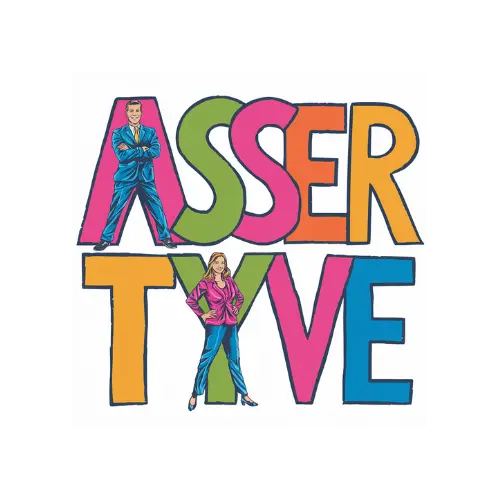Key Principles of Assertive Communication
Assertive communication involves expressing your thoughts, feelings, and needs in a direct and respectful manner. It is important to communicate assertively by using “I” statements to take ownership of your feelings and opinions, rather than attributing them to others. This helps in clearly conveying your message while also showing respect for the other person’s perspective.
Another key principle of assertive communication is maintaining a calm and composed demeanor, even in challenging situations. By staying emotionally regulated and avoiding aggressive or passive behaviors, you can create a conducive environment for open and honest dialogue. Assertive communicators listen actively, seek understanding, and strive for mutually beneficial solutions in conversations.
Understanding the Difference Between Assertive, Aggressive, and Passive Communication
Assertive communication involves expressing your thoughts, feelings, and needs in a direct and respectful manner. It is about standing up for yourself while also considering the rights and feelings of others. Assertive communicators are able to voice their opinions clearly without being overly aggressive or passive.
On the other hand, aggressive communication is characterized by expressing thoughts and feelings in a way that disregards the rights of others. Aggressive communicators may use intimidation, manipulation, or hostile language to get their point across, often creating a confrontational and hostile atmosphere. This style of communication can lead to conflicts and breakdowns in relationships. Passive communication, on the other hand, involves avoiding conflict and neglecting one’s own needs and desires. Passive communicators may have difficulty expressing themselves and tend to put others’ needs above their own, often leading to feelings of resentment and powerlessness.
Active Listening Techniques for Effective Communication
Active listening is a fundamental skill that plays a crucial role in effective communication. It involves fully engaging with the speaker, recognizing their perspective, and providing feedback to demonstrate understanding. By giving the speaker your undivided attention, maintaining eye contact, and nodding to show acknowledgement, you convey respect and interest in what they are saying.
Additionally, paraphrasing the speaker’s words and summarizing their main points help clarify any potential misunderstandings and ensure that both parties are on the same page. Reflecting the speaker’s feelings and emotions also enhances connection and fosters a greater sense of empathy in the interaction. When you practice active listening techniques, you create a safe and supportive environment where individuals feel heard and valued, leading to more meaningful and productive conversations.
Setting Clear Boundaries in Communication
Setting clear boundaries in communication is essential for maintaining healthy relationships and establishing respect. When setting boundaries, it is important to clearly communicate your needs, values, and limits without hesitation. By clearly expressing what is acceptable and what is not, you create a foundation for mutual understanding and healthy interactions.
Boundaries help prevent misunderstandings, establish expectations, and maintain personal well-being. It is crucial to assertively communicate boundaries without being apologetic or aggressive. By setting and respecting boundaries in communication, you foster an environment of trust, respect, and effective communication.
The Power of Nonverbal Communication
Nonverbal communication plays a significant role in how messages are perceived and understood during interactions. From facial expressions and gestures to body posture and eye contact, these nonverbal cues often convey emotions, attitudes, and intentions more powerfully than words alone. Researchers estimate that up to 93% of communication is nonverbal, emphasizing the importance of being aware of and harnessing the potential of nonverbal signals in our exchanges with others.
In addition to enhancing the clarity and impact of our messages, mastering nonverbal communication can also help build rapport and establish trust in relationships. By aligning our verbal and nonverbal cues, we can create a more coherent and authentic communication style that fosters better connections with others. Understanding the nuances of nonverbal communication enables us to better interpret unspoken messages from others and adapt our own nonverbal behavior to enhance the effectiveness of our interpersonal interactions.
Managing Emotions in Communication
Emotions play a significant role in communication, influencing both the sender and receiver of messages. When emotions are running high, it can be challenging to express oneself effectively and listen to others with empathy. Therefore, it is crucial to acknowledge and manage one’s emotions during conversations to ensure clear and constructive communication.
By being aware of your emotions and understanding their impact on your communication, you can make conscious choices on how to express yourself in a calm and assertive manner. Taking a moment to pause and reflect on your feelings before responding can help prevent emotional reactions that may escalate a situation. Additionally, practicing active listening and showing empathy towards the emotions of others can foster a more positive and productive exchange of ideas.
Constructive Feedback: Giving and Receiving
Giving constructive feedback involves providing specific and actionable information to help someone improve their performance or behavior. It’s essential to focus on the behavior or actions rather than making personal attacks. When giving feedback, be sure to use a neutral and non-judgmental tone to encourage open communication and understanding.
Receiving feedback gracefully can be challenging, but it’s crucial for personal and professional growth. Instead of becoming defensive or dismissive, try to listen actively and with an open mind. Reflect on the feedback given and take the opportunity to learn and grow from it. Remember, feedback is a valuable tool for self-improvement and should be welcomed as an opportunity for development.
Conflict Resolution Strategies for Productive Conversations
In any conflict resolution process, it is essential to create a safe and open environment where all parties involved can express their thoughts and emotions without fear of judgment. Active listening plays a crucial role in this regard, as it involves fully concentrating on what the other person is saying without interrupting or formulating responses prematurely. By actively listening, you demonstrate respect for the other person’s perspective and show that you value their input, thereby fostering a sense of mutual understanding and empathy.
Another effective strategy in conflict resolution is to focus on interests rather than positions. This means digging deeper to understand the underlying needs, concerns, and motivations driving each party’s stance on the issue at hand. By uncovering shared interests and common goals, you can work collaboratively towards finding a mutually beneficial solution that addresses core concerns and minimizes conflict. This approach not only promotes cooperation and creativity but also helps in building stronger relationships based on trust and respect.
Building Trust and Rapport in Interactions
Trust and rapport are essential components in any interaction, whether in personal relationships or professional settings. Building trust involves being authentic, reliable, and consistent in your words and actions. When others perceive you as trustworthy, they are more likely to open up, share their thoughts and feelings, and engage in meaningful conversations.
Rapport, on the other hand, is about establishing a connection and fostering a sense of mutual understanding and respect. This can be achieved by showing empathy, active listening, and demonstrating genuine interest in the other person. When trust and rapport are present in interactions, communication becomes smoother, more effective, and conducive to building positive relationships.
• Building trust involves being authentic, reliable, and consistent in your words and actions.
• When others perceive you as trustworthy, they are more likely to open up and engage in meaningful conversations.
• Rapport is about establishing a connection and fostering mutual understanding and respect.
• Showing empathy, active listening, and demonstrating genuine interest can help build rapport.
• Trust and rapport in interactions make communication smoother, more effective, and conducive to building positive relationships.
Practicing Assertive Communication in Various Situations
Whether you are at work, at home, or in social settings, practicing assertive communication is essential for effectively expressing your needs and boundaries. In the workplace, assertiveness can help you communicate confidently with colleagues, managers, and clients, leading to better collaboration and mutual respect. When dealing with family or friends, assertive communication can prevent misunderstandings and conflicts by clearly stating your feelings and expectations.
In various situations, assertive communication involves speaking up for yourself in a calm and respectful manner, while also actively listening to others and considering their perspectives. Whether you are giving feedback on a project, setting boundaries with a loved one, or resolving a conflict, assertiveness allows you to express your thoughts and emotions honestly and assert your rights without being aggressive or passive. By practicing assertive communication in different scenarios, you can build stronger relationships, improve problem-solving skills, and create a more positive and understanding environment for effective communication.
What are the key principles of assertive communication?
The key principles of assertive communication include expressing your thoughts, feelings, and needs clearly and directly, respecting the thoughts and feelings of others, maintaining eye contact, using confident body language, and speaking in a calm and respectful tone.
How can I differentiate between assertive, aggressive, and passive communication?
Assertive communication involves expressing yourself confidently and respectfully, while aggressive communication involves being overly forceful or hostile. Passive communication, on the other hand, involves avoiding conflict and not expressing your needs or opinions.
What are some active listening techniques for effective communication?
Active listening techniques include maintaining eye contact, nodding to show understanding, paraphrasing what the speaker has said, asking clarifying questions, and avoiding interrupting.
How can I set clear boundaries in communication?
Setting clear boundaries in communication involves being direct about your needs and expectations, using “I” statements to express how you feel, and being assertive in stating what is and is not acceptable to you.
What is the power of nonverbal communication in assertive communication?
Nonverbal communication, such as body language, facial expressions, and tone of voice, plays a significant role in assertive communication as it can convey confidence, respect, and sincerity.
How can I manage emotions in communication?
To manage emotions in communication, it is important to practice self-awareness, take deep breaths to calm yourself, and use techniques such as reflective listening to validate the emotions of others.
What are some tips for giving and receiving constructive feedback?
When giving feedback, focus on specific behaviors or actions, use “I” statements, and offer suggestions for improvement. When receiving feedback, listen attentively, ask clarifying questions, and thank the person for their input.
What are some conflict resolution strategies for productive conversations?
Conflict resolution strategies include active listening, finding common ground, brainstorming solutions together, and seeking compromise. It is important to remain calm and respectful during conflicts.
How can I build trust and rapport in my interactions?
Building trust and rapport involves being honest and reliable, showing empathy and understanding, and actively listening to others. It is also important to follow through on commitments and maintain a positive attitude.
How can I practice assertive communication in various situations?
To practice assertive communication in various situations, work on expressing your thoughts and feelings clearly, setting boundaries, using active listening techniques, managing emotions, giving and receiving feedback constructively, resolving conflicts productively, and building trust and rapport with others. Remember to stay confident and respectful in your interactions.



Leave a Reply